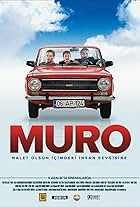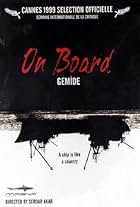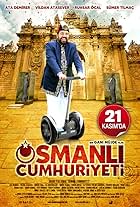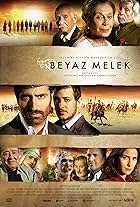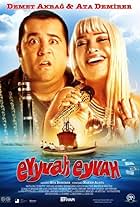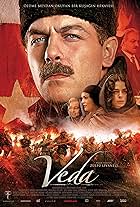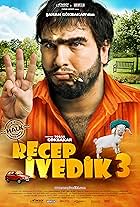
cgyford
Joined Dec 2004
Welcome to the new profile
We're still working on updating some profile features. To see the badges, ratings breakdowns, and polls for this profile, please go to the previous version.
Ratings59
cgyford's rating
Reviews61
cgyford's rating
Struggling filmmaker Stanley Kubrick ("Fear and Desire" & "Flying Padre") follows the failure of his feature debut with this promotional film for the Seafarers International Union in order to recoup some of the losses and raise funds for his sophomore feature.
The film, supervised by the staff of union magazine "The Seafarers Log", the promotes the work of the Seafarers International Union Atlantic and Gulf District with shots of the hiring hall, the canteen, the bar, the print shop and a union meeting at their New York head quarters.
Secretary-Treasurer of the SIU Atlantic and Gulf District Paul Hall emerges from the ranks with a powerful speech extolling the virtues of the union which are all meticulously illustrated to the dulcet tones of news reader Don Hollenbeck who also bookends the membership-drive.
The future filmmaking legend may be only in it for the money but he nonetheless allows a few flourishes in his colour debut, such as the extended, sideways-dolly shot of the canteen, and the film provides a curious insight into a union in its heyday.
"Call it a dream fulfilled."
The film, supervised by the staff of union magazine "The Seafarers Log", the promotes the work of the Seafarers International Union Atlantic and Gulf District with shots of the hiring hall, the canteen, the bar, the print shop and a union meeting at their New York head quarters.
Secretary-Treasurer of the SIU Atlantic and Gulf District Paul Hall emerges from the ranks with a powerful speech extolling the virtues of the union which are all meticulously illustrated to the dulcet tones of news reader Don Hollenbeck who also bookends the membership-drive.
The future filmmaking legend may be only in it for the money but he nonetheless allows a few flourishes in his colour debut, such as the extended, sideways-dolly shot of the canteen, and the film provides a curious insight into a union in its heyday.
"Call it a dream fulfilled."
Professional photographer turned budding filmmaker Stanley Kubrick ("Day of the Fight") follows up his self-financed directorial debut with a rather uninspired documentary commission from RKO which the filmmaker himself would later describe as silly.
The film supposedly documents two ordinary days in the life of Catholic priest Father Fred Stadtmuller as he pilots his plane between his 11 mission churches spread out over a 4,000 square mile area of Harding county in north-eastern New Mexico but the whole thing feels staged .
Father Stadtmuller makes a surprisingly insipid presence behind the controls of the Spirit of St. Jospeh as we follow him from the solemn funeral of a ranch hand to evening devotions to pastoral duties to canary breeding to an emergency flight all to the dulcet tones of news reader Bob Hite.
The future filmmaking legend seems constricted by the news reel format and although he manages to build some convention defying atmosphere there is little of the visual or structural flourish that marked out his previous "day in the life of..." documentary as being from an emerging talent.
"There's no brass band here, no cheering crowds, no newspapermen clamouring for a headline..."
The film supposedly documents two ordinary days in the life of Catholic priest Father Fred Stadtmuller as he pilots his plane between his 11 mission churches spread out over a 4,000 square mile area of Harding county in north-eastern New Mexico but the whole thing feels staged .
Father Stadtmuller makes a surprisingly insipid presence behind the controls of the Spirit of St. Jospeh as we follow him from the solemn funeral of a ranch hand to evening devotions to pastoral duties to canary breeding to an emergency flight all to the dulcet tones of news reader Bob Hite.
The future filmmaking legend seems constricted by the news reel format and although he manages to build some convention defying atmosphere there is little of the visual or structural flourish that marked out his previous "day in the life of..." documentary as being from an emerging talent.
"There's no brass band here, no cheering crowds, no newspapermen clamouring for a headline..."
"Look" magazine photographer and chess-player Stanley Kubrick teamed up with old school chum Alexander Singer to launch their filmmaking careers and that of their star with this short but sweet self-financed boxing documentary, based on the future legendary director's 1949 photo feature "Prizefighter", which after the original buyer went belly-up was sold to RKO for a cool $100 profit.
We follow the fan (short for fanatic as no-nonsense narrator Douglas Edwards informs us) to the places where matched pairs of men get up on a canvas covered platform and commit legal assault and lawful battery in an attempt to capture the primitive vicarious visceral thrill of seeing one animal overcome another with the science of hammering each other unconscious with upholstered fists.
Irish-American middleweight Walter Cartier is selected at random, with a little help from boxing historian Nat Fleischer, from the 6,000 professional prize fighters who more often than not fail to scrape a living in America to give us insight into the people the fan seldom sees and never considers behind the facts and figures and columns of cold statistics in the record books.
Walter Cartier makes an amiable enough presence at the centre of the action to be able to go on to a TV acting career as we see his daily routine transform him into arena man, with able support coming from his twin brother and manager Vincent Cartier and opponent Bobby James as well as a brief appearance from Nat Fleischer and the dulcet tones of news reader Douglas Edwards.
The filmmakers make a fine pairing as Kubrick ducks and dives with his hand-held camera getting up close and personal with Cartier both before and during the fight while Singer rises above it all with his camera on a tripod to catch an overview of the action which together with the debut score of another childhood friend Gerald Fried all comes together to make a strong first impression.
"No one ever told Walter to be a fighter..."
We follow the fan (short for fanatic as no-nonsense narrator Douglas Edwards informs us) to the places where matched pairs of men get up on a canvas covered platform and commit legal assault and lawful battery in an attempt to capture the primitive vicarious visceral thrill of seeing one animal overcome another with the science of hammering each other unconscious with upholstered fists.
Irish-American middleweight Walter Cartier is selected at random, with a little help from boxing historian Nat Fleischer, from the 6,000 professional prize fighters who more often than not fail to scrape a living in America to give us insight into the people the fan seldom sees and never considers behind the facts and figures and columns of cold statistics in the record books.
Walter Cartier makes an amiable enough presence at the centre of the action to be able to go on to a TV acting career as we see his daily routine transform him into arena man, with able support coming from his twin brother and manager Vincent Cartier and opponent Bobby James as well as a brief appearance from Nat Fleischer and the dulcet tones of news reader Douglas Edwards.
The filmmakers make a fine pairing as Kubrick ducks and dives with his hand-held camera getting up close and personal with Cartier both before and during the fight while Singer rises above it all with his camera on a tripod to catch an overview of the action which together with the debut score of another childhood friend Gerald Fried all comes together to make a strong first impression.
"No one ever told Walter to be a fighter..."








